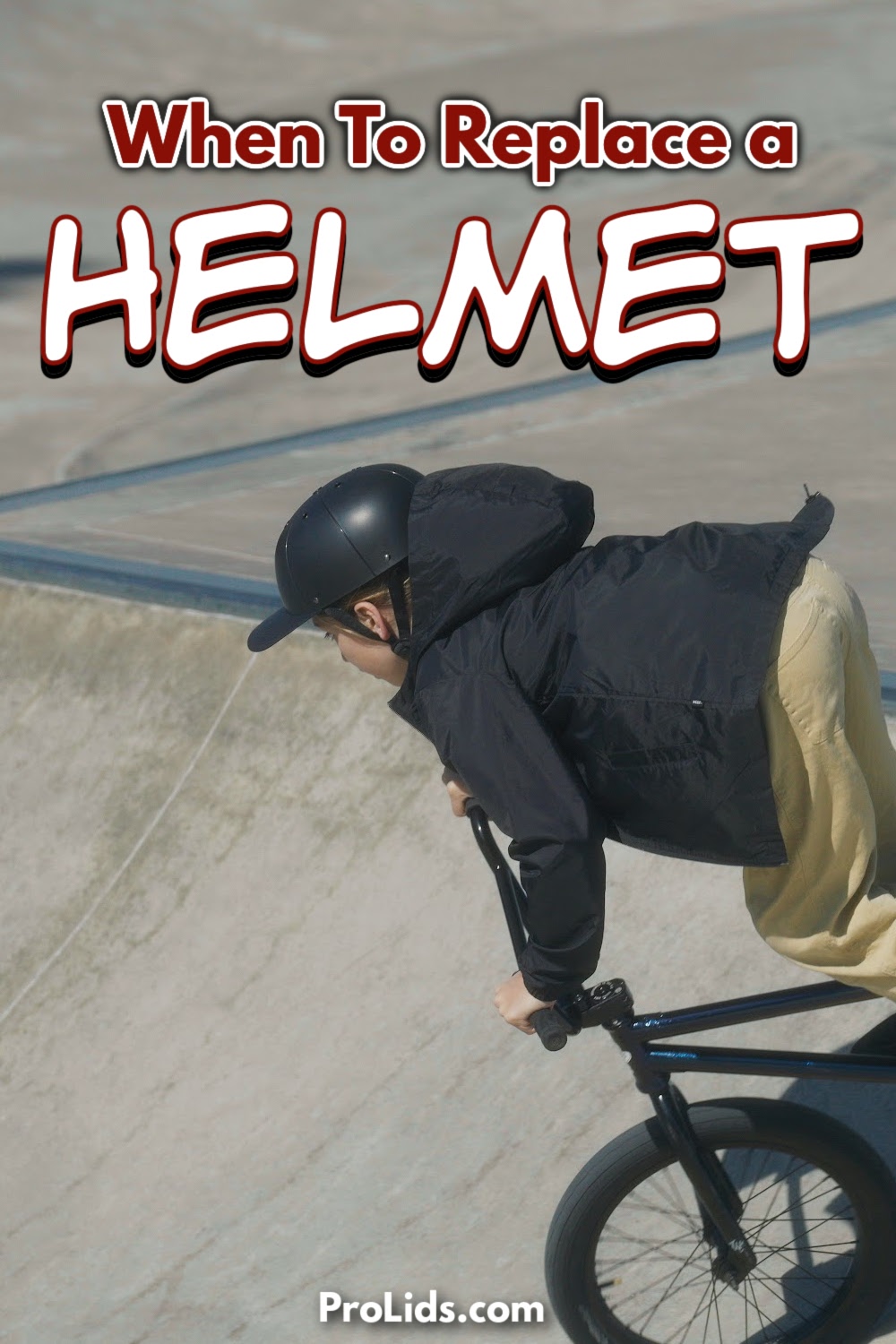When to Replace a Helmet

A helmet is very important to wear while riding bikes, rollerblading, skateboarding, and more. However, helmets don’t last forever. It is important to know when to replace a helmet to remain as safe as possible.

Knowing when to replace a helmet can help keep you and your kids safe while having fun riding around town. Riding around on wheels is an excellent form of physical activity that is disguised as a fun activity. Some people like to bike around for health purposes, while others use it as a hobby.
Safety should be a top priority, no matter the reason for hopping on a bike. Bike safety starts with helmets. A helmet is designed to protect our heads in a crash. Helmets lower the risk of a serious head injury by more than 70%.

The outer shell is mostly for aesthetics; the inner lining does the heavy lifting. The lining is made from foam that absorbs the shock from the crash and prevents most of that shock from hitting our heads. However, the foam becomes compressed the more we wear it, even more so if we crash often enough.
That compression reduces the protection level of the foam. We can use some apparent visuals to determine when to replace a helmet: cracks or broken straps. However, there may need to be a clear sign that it is time to replace a helmet. This begs the question, when is the right time to replace a helmet?

When to Replace a Helmet
We are fortunate enough to have entities in the US that test products so consumers can make more informed decisions. One entity is the Consumer Product Safety Commission (CPSC). According to CPSC, a helmet should be replaced every 5 to 10 years unless the manufacturer recommends otherwise.
So, what do manufacturers recommend? Most helmet manufacturers recommend replacing helmets every 3 to 5 years. The only common number here is 5 years. Any rational adult can then deduce that 5 years is a good standard to set.
The Snell Foundation, a nonprofit organization that is dedicated to helmet safety, also recommends 5 years. Snell sites wear and tear as enough of a reason to replace a helmet.

Signs it’s Time for a New Helmet
CPSC, Snell, and most manufacturers agree that 5 years is a pretty safe bet for when to replace a helmet. However, another underlying recommendation is for people to use their best judgment. Obviously, a helmet with a giant crack in it should be replaced, even if it’s only 2 years old.
Heavy use is highly recommended, as helmets are important. But wear and tear are other factors. Lastly, the environment in which the helmet is stored and used can also play a role. All of these factors can reduce the protection of a helmet over time.
This is when we need to use our best judgment. Luckily, even an old helmet will still provide protection. A scientific study determined that older helmets won’t put you at significant risk. We must be able to make the call using the 5-year recommendation.

Helmet Upgrades Over Protection
Knowing when to replace a helmet is about more than just the level of protection it provides. Yes, ensuring that your helmet can offer ample protection is essential. Head injuries from a bike crash can be very devastating.
However, the degradation of a helmet is not the only cause of a new helmet. Helmet technology doesn’t move at the same pace as TVs. However, there have been advances in rider safety that are worth checking out—for example, the type of foam used in helmets or the material used for the outer shell.

We may be able to hold onto helmets for up to 10 years. However, we should also be open to upgrading if new technology offers higher protection levels. Ultimately, it is our decision to make. We want to ensure we are protected, our children are protected, and we reduce emergency room visits.
This is done by wearing a helmet, be it old or brand new.
